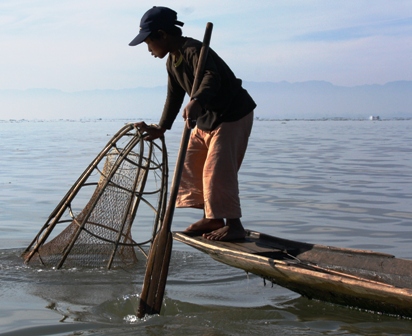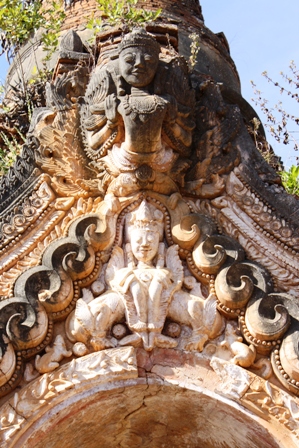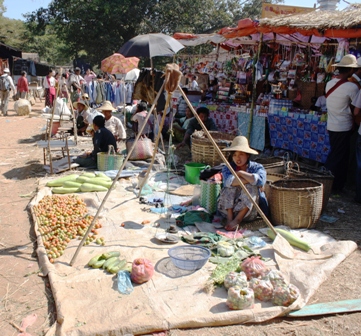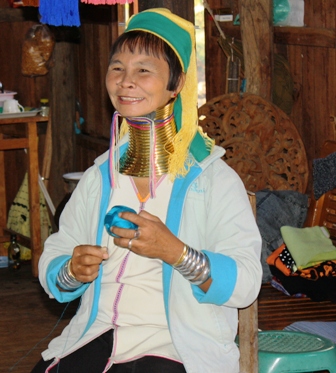
Click the photo above to see an album of photos. To return to our website close the window.
Read previous Welcome to Myanmar or next Biking the Lake
7 January 2010 Nyaungshwe Myanmar


Our day had started in the still cold air at 8 AM. We joined our boatman and guide and took our places in wooden seats set single file in the long, narrow wooden boat. Mists rose from the water as we motored out through the narrow canal into the body of the shallow lake. The deepest section is no more than 3 M deep. The water is low at this time of year and water weeds extend far into the center of the lake. Only shallow boats can ply the waters. A few boats were collecting the weeds to be used as fertilizer and mulch for their gardens.
Fishermen were already busy. They use a unique method of paddling their flat bottomed wooden canoes. One man stands at the end of the boat with a long paddle perpendicular to the water. He wraps his leg and foot around the paddle and uses a snake-like motion to power the boat. We stopped to see their catch, mostly small fish, as the larger fish hide elsewhere during the dry season.

We stopped at a few towns specializing in various crafts. We watched silver smiths making jewelry by hand, weavers making cloth from the fibers of lotus flower stems, weaving beautiful cotton and silk scarves, hand rolling cigars and making flat bottomed fishing boats of teak. The cigars are sold everywhere and apparently are quite mild. Tobacco is mixed with banana or other leaf bits, herbs and spices. A filter is made from corn husks rolled into a pencil shape. A green “cigar” leaf is laid at the end of the filter and lined with cigarette paper. The tobacco mixture is added and rolled into its leaf casing. The filter is cut to the right length and the other end rolled shut. You can buy three cigars for 200K (about 30 cents). Everyone, including the ancient lady at the cigar shop smokes them.
We visited a few temple pagoda sites around the lake. The most interesting was the Phaung Daw OO Paya. A large golden barge with two mythical swans at its prow sits in a boat house waiting for the annual festival held in late September, early October when the water levels are high. Four ancient golden buddhas are paraded around the lake visiting all the other pagodas, dispensing good fortune to all the villagers. We also visiting the Jumping Cat temple where monks have kept themselves occupied during their spare time by training resident cats to jump through hoops for food. There was to be no jumping during our visit, the cats were snoozing beside an equally immobile monk and were not to be enticed into any tricks.
Much of the lake shores are given over to floating market gardens. We floated through narrow channels where plants, especially tomatoes, are grown on wooden trellises supported on floating mats of vegetation held in place with bamboo poles..
It was a most enjoyable day on the lake and a must-do activity for every visitor.